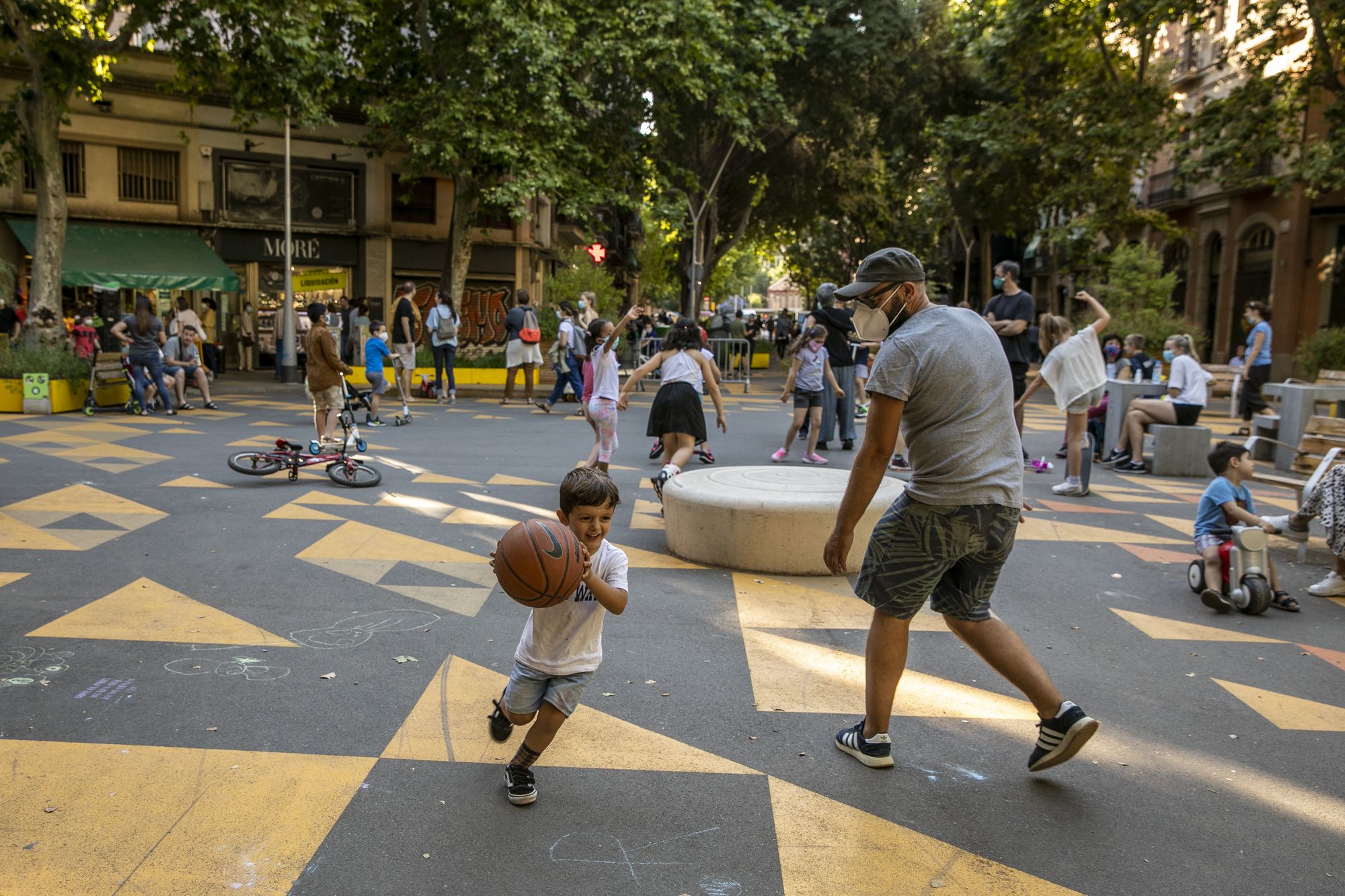Superblocks in urban planning

Superblocks come from Barcelona and have a reputation for revolutionising urban development. Read everything you need to know about the urban planning approach here.
Billboard
Skyscrapper
Halfpage
What’s special about Superblocks
Superblocks are also known as superilles, supergrätzl, superislands or Kiezblocks. It is a concept of urban traffic planning intended to calm traffic in residential neighbourhoods. Each superblock consists of 3×3 blocks (approx. 400m x 400m). Outer streets are seperating them from each other. Within the blocks, no through traffic is allowed on the streets. Thus, they create an inner area that allows redesign and alternative use – for pedestrians and cyclists, for example.
The concept of superblocks comes from Barcelona, where large blocks have dominated the cityscape for decades. This urban design has now attracted the attention of many other cities, as it offers a great deal of potential. This is because streets often make up a large part of the total area in a city. In European cities, they occupy between 15 and 25 percent of the land. By converting them into superblocks, it is possible to use the streets for other purposes and thus make cities more liveable.
Experts hope that superblocks will reduce congestion in residential areas as well as noise and exhaust emissions. In addition, the newly gained space offers valuable opportunities for adapting cities to climate change. For example, the traffic-calmed streets and eliminated parking spaces within the superblocks can implement heat-reducing measures.

Superblocks for more liveable, sustainable cities
A look at Barcelona shows the full potential of superblocks. For example, here in the Gràcia neighbourhood, city planners have been pushing superblocks since 1993. Just one year after implementation, the volume of cars within the superblock dropped by 40 percent. On the edges of the block, there were 25 percent fewer cars.
Increasingly, therefore, superblocks are important suggestions as transformation strategies for more sustainable neighbourhoods. They can be implemented in cities of various shapes and densities. For starters, mini blocks of 2×2 blocks are also a possibility.
A March 2022 study by Sven Eggimann in the journal Nature Sustainability shows that in some cities, more than 40 percent of the street network is eligible for transformation into superblocks or mini blocks. The scientist from the Swiss Federal Laboratories for Materials Testing and Research shows which cities have the potential for this redesign. That’s because not every layout qualifies. Mexico City, Madrid and Tokyo are particularly good candidates, according to the study.
What is certain is that even mini blocks can counteract climatic challenges such as rising temperatures, noise, and air pollution, and dwindling green spaces. “A key factor is urban planning. The design and use of street space affects the quality of life of residents and has the potential to significantly improve the urban climate,” Eggimann explains.

The idea
Spanish biologist, psychologist, environmental and energy engineer Salvador Rueda developed the concept of Superblocks in the 1990s. In this context, Barcelona offered many possibilities due to its grid-like street network. In 2014, Rueda defined the following seven design principles for superblocks as part of the “city as a system of proportions”:
- Context of urban action: activities in the city should not directly or indirectly harm environmental, economic, and social interests.
- Land use and urban morphology: distances should be considered in spatial planning to intensify social cohesion.
- Urban functionality: Public space should be safe and contribute to mobility and quality of life.
- Urban complexity: A diversity of institutions, individuals and activities increases the available knowledge. The ideal ratio of local manufacturing to residential and commercial space is 1:4 to 1:3 in buildings.
- Urban green and biodiversity: there is no way of detaching sustainability and biodiversity of ecosystems from the city.
- Metabolic efficiency: urban material and energy cycles should be as efficient as possible without compromising the ecosystem.
- Social cohesion: coexisting social groups need access to housing and necessary public facilities, which should always be within a maximum of 10 minutes walking distance.
Since 2017, Barcelona has recognized Rueda’s Superblock as an urban planning model.

Superblock locations
Not only is Barcelona redesigning its neighbourhoods, but many other Spanish cities are showing interest in traffic calming measures. Even in cities without gridded streets, there is a lot of potential. Sven Eggimann’s methodology helps identify factors such as topology and population density to see how many streets in a city could become superblocks. The rule here is that the blocks must not unduly disrupt traffic flow.
For example, in Germany, the Kiezblock campaign is calling for the creation of superblocks Berlin. There are also projects around superblocks and Supergrätzl in Leipzig and Hamburg, as well as in Vienna. London’s Low-Traffic Zones, which exist since the pandemic, follow a similar principle.
In Buenos Aires, five superblocks were already established in 2018. Cities in Ecuador, Australia, Taiwan, and China are also joining the trend. Eco-blocks are already part of local urban planning regulations in over 100 Chinese cities. In Japan, the superblocks approach is seen as a throwback to old cultural practices – and that’s true of all countries, as greater social cohesion, more space to play, green spaces and fewer cars used to be common in every city.
Read more about the superblocks in Barcelona here.












